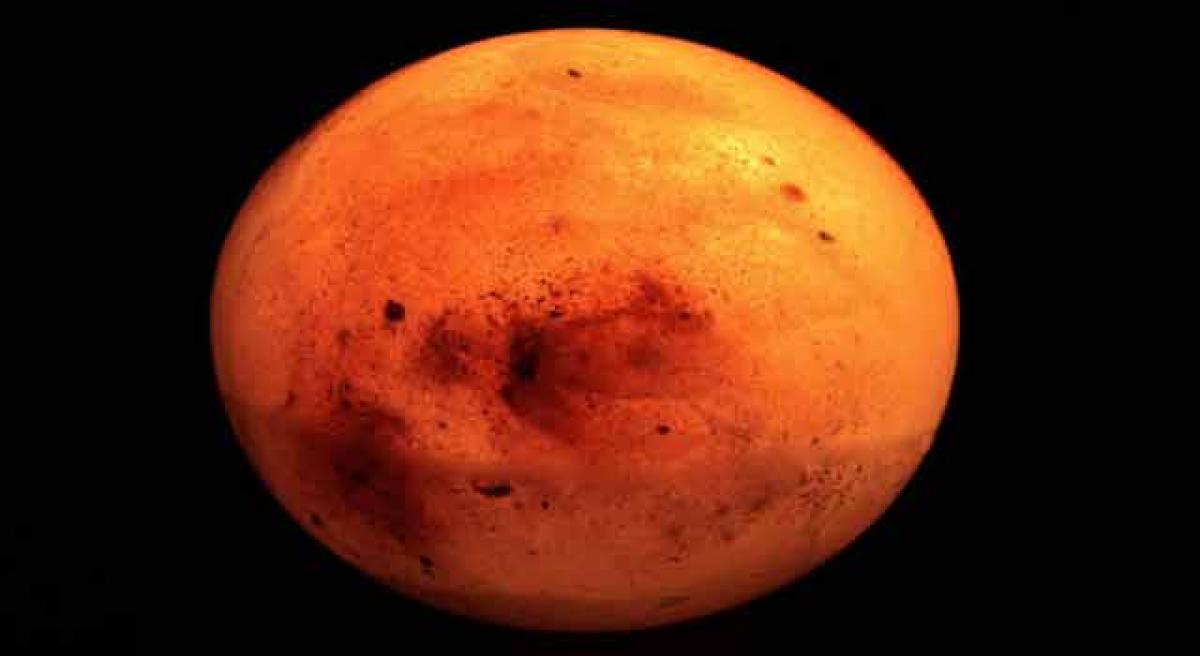Live
- Boeing lays off over 400 members of professional aerospace union
- Ready for debate on BRS 10 year rule and Congress one year's, TPCC Chief Mahesh Goud
- Director Arjun Jandhyala speaks about ‘Devaki Nandana Vasudeva’
- Amitabh Bachchan praises Bihar’s ‘LittiChokha’
- ‘Maha Sandram’ gets a grand launch
- Cong wants to break marginalised communities, BJP bats for everyone: PM Modi
- Sara Ali Khan enjoys camping under full moon
- Centre launches campaign for assessment year 2024-25 to help taxpayers
- Dutch cabinet holds out after crisis talks
- Rashmikasparks buzz on Grazia cover page
Just In

In a bid to develop “magnetoshells” to “growable interplanetary habitats to take humans to Mars”, the US space agency has selected eight technology proposals that can transform future aerospace missions by building efficient aerospace systems.
Washington: In a bid to develop “magnetoshells” to “growable interplanetary habitats to take humans to Mars”, the US space agency has selected eight technology proposals that can transform future aerospace missions by building efficient aerospace systems.
Awards under phase II of the NASA Innovative Advanced Concepts (NIAC) programme can be worth as much as $500,000 for a two-year study.
It will allow proposers to further develop concepts funded by NASA for Phase I studies that successfully demonstrated initial feasibility and benefit.
“The NIAC programme is one of the ways NASA engages the US scientific and engineering communities by challenging them to come up with some of the most visionary aerospace concepts,” said Steve Jurczyk, associate administrator of NASA’s Space Technology Mission Directorate in Washington, DC.
This year’s phase II portfolio addresses a range of leading-edge concepts, including an interplanetary habitat configured to induce deep sleep for astronauts on long-duration missions. It also has plans for a highly efficient dual aircraft platform that may be able to stay aloft for weeks or even months at a time.
Phase II includes a method to produce “solar white” coatings for scattering sunlight and cooling fuel tanks in space down to 148 degree Celsius below zero with no energy input needed.
NASA selected eight projects through a peer-review process that evaluated innovativeness and technical viability.
“Phase II decisions are always challenging, but we were especially challenged this year with so many successful Phase I studies applying to move forward with their cutting-edge technologies,” added Jason Derleth, the NIAC program executive at NASA headquarters.
“Whether it's tensegrity habitats in space, new ways to get humans to Mars or delicate photonic propulsion, I am thrilled to welcome these innovations and their innovators back to the programme,” Derleth noted in a NASA statement.
All projects are still in the early stages of development, most requiring 10 or more years of concept maturation and technology development before use on a NASA mission.
Also Read:

© 2024 Hyderabad Media House Limited/The Hans India. All rights reserved. Powered by hocalwire.com







